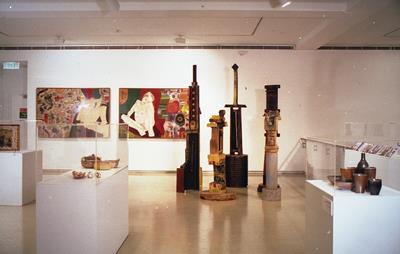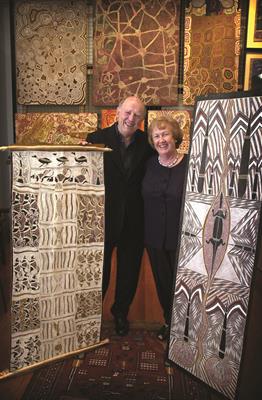There is a mystique about the big-time art collector. It’s similar to being a successful punter or a wizard on the stock market. The collector is seen as someone who can pick a winner, perhaps by taking risks that others would never consider. There will be works bought for a small sum that are now worth a fortune, pieces acquired from unknown artists who go on to be superstars.
This is the rather glamorous image that many have entertained of Liz and Colin Laverty. The truth is more mundane, and much better. Over the years I’ve been in the habit of referring to the Lavertys when anyone asked me questions about ‘investing in art’, if only to show that art cannot be treated in same business-like manner as stocks or real estate. The Lavertys may have put together a valuable collection but they never thought of it as an ‘investment’ or allowed their taste to be influenced by financial considerations other than simple affordability. When the urge was strong there would be ways to overcome that obstacle, such as payment by installments.
The Lavertys only ever bought a work of art if they truly loved it, although there were various degrees of attraction. Some pieces represent grand passions, others mild flirtations. A secondary consideration was to help out an artist or group of artists, either through direct payment or by bringing their work to wider attention. The Lavertys were always among the first to take an interest in new developments and emerging areas. With more than one region they were pioneers.
Col’s first interest was in colonial art, chiefly paintings of racehorses and livestock. He accumulated an important collection of these works, researched the topic and published two books. When he became interested in contemporary art he took up the subject with the same passion. When I met the Lavertys in the mid-1980s their house was packed with paintings by artists such as Peter Booth, Ildiko Kovacs, Richard Larter, Allen Mitelman, William Robinson, Aida Tomescu, Tony Tuckson, and Ken Whisson. When Col and Liz committed to an artist they would follow them from show to show, buying multiple works. Their tastes were slightly different, so every purchase involved discussion and debate. While their acquisitions may have seemed compulsive, they were never arbitrary or ill-considered.
There were many collectors with greater resources than the Lavertys but with none of their hunger for discovery. From the moment Liz and Col became aware of indigenous art at the Brisbane Expo of 1988, they pursued it with extraordinary energy and initiative. In typical fashion Col researched the subject exhaustively and sought to build an understanding of contemporary Aboriginal art and life. He came to the conclusion that indigenous art should not be treated as a separate category within Australian art, but as a natural part of the contemporary scene. This was necessary to break down barriers of prejudice, and to ensure that the artists got a fair deal for their work. He also devoted much thought to the perennial problems of an industry riven by competition, cronyism and forms of petty profiteering.
Col brought the same attitude to bear in his collecting as in his activities as a doctor and scientist. He wanted to find out how things worked, and how to make them work better. He built up an impressive database, and laid plans for donating artworks to public institutions. This auction is a way for Liz to scale down a collection that has grown to mammoth proportions, and to put money into family matters.
The lesson of the Laverty collection is that the secret of successful investing in art is to invest in one’s own taste, and to love what you’re doing. No great collection has ever been acquired by means of a strategy. The planning comes along when a critical mass has been reached and it’s time to think of the future. When collecting has been such a pleasure, letting go is hard. The consoling thought is that all collectors are only custodians who take temporary charge of a cultural heritage that belongs to the artists and the world.
JOHN MCDONALD

